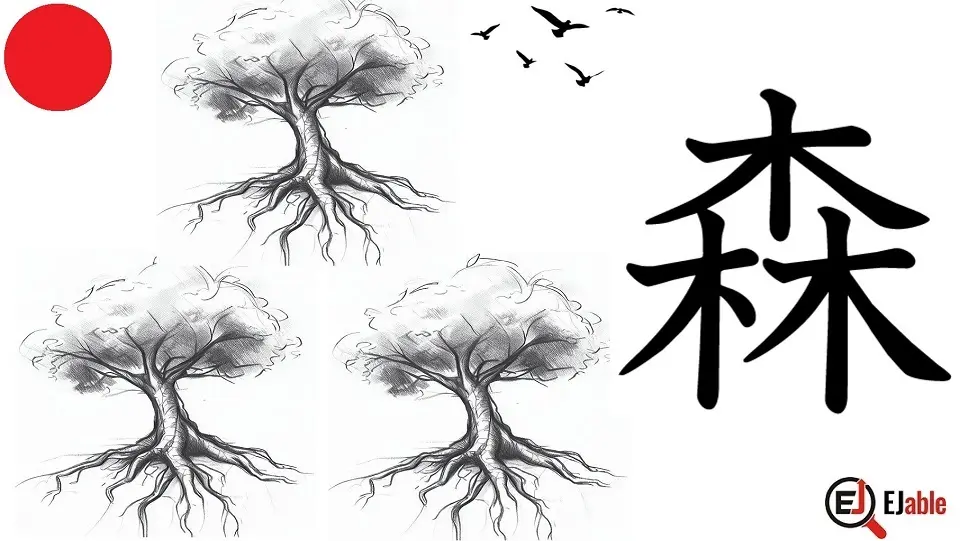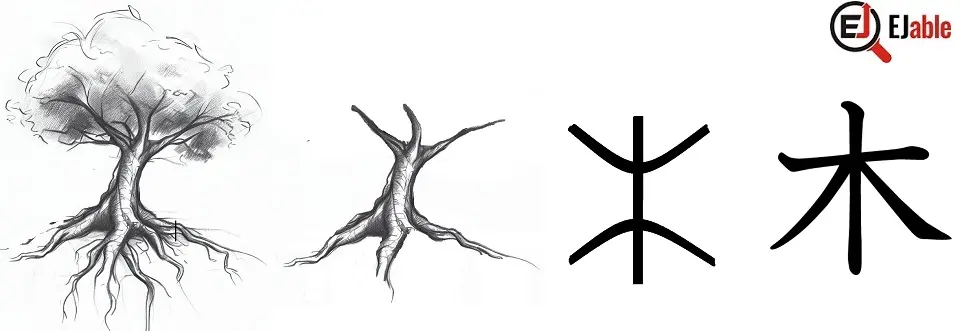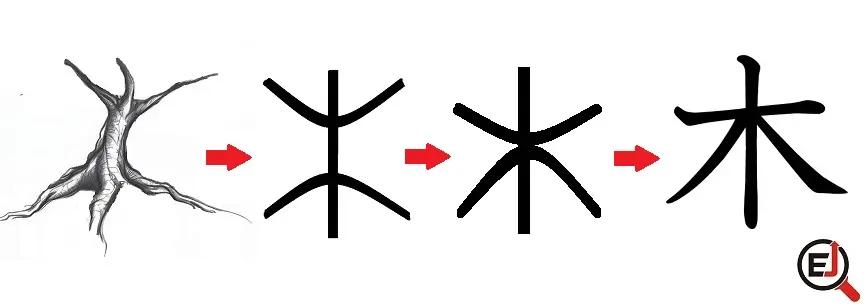Kanji for Forest of Jungle (森, Mori)

The kanji for forest or jungle in Japanese is 森 (mori). This character is essentially a visual representation of a forest.
The Kunyomi or the Japanese pronunciation of the Kanji 森 is mori (もり), and the Onyomi (Chinese) pronunciation is shin (シン).
Forest’s Kanji is constructed with 12 strokes. It is a part of the JLPT N2 syllabus. In Japanese schools, this Kanji is taught in grade 1.
This article will discuss the origin of the forest’s Kanji and easy ways to remember it. We will also discuss the compounded words in which 森 appears and all related information about this Kanji.
Origin of Forest’s Kanji 森 (Mori)
The kanji of forest 森 comprises three 木 (ki) characters. The character 木 represents a single tree, and when you put three together, it signifies a group of trees, hence a forest.
The visual idea is quite simple: one tree makes a tree (木), two trees make the Kanji for a grove (林), and three trees make a forest (森). The clever stacking of tree symbols to indicate a growing density of trees provides a simple yet effective visual interpretation of the term ‘forest.’
So, the shape of the kanji visually represents a dense stand of trees, as you would find in a forest. It’s a prime example of how many Kanji characters are pictographic or ideographic, visually representing the concept they stand for.
Moreover, it’s important to note that the forest’s kanji 森 is not just a visual representation. It also symbolizes cultural significance in Japan, a country with many forests.
Forests in Japan are often associated with tranquility and spirituality, as they’re the home of kami (gods) in Shinto beliefs. Therefore, the kanji 森 carries a sense of the cultural and spiritual significance of forests in Japanese culture.
Forests and Japanese Culture:
The symbolism of 森 goes beyond its pictographic roots. In Japanese culture, forests hold a deep spiritual and cultural significance. In Shintoism, Japan’s indigenous religion, forests are considered sacred spaces and home to kami (gods or spirits). Many Shinto shrines are situated within or close to forests, further cementing the association between forests and the spiritual world. Consequently, the kanji 森 carries connotations of tranquility, spirituality, and reverence, reflecting the deep cultural ties between the Japanese people and their natural surroundings.
In the Japanese language, 森 extends its influence beyond standalone use. It forms the root of many compound words and phrases, influencing their meanings and connotations. For example, 森林 (shinrin) translates to ‘woods,’ emphasizing the vastness and density of a forest. Similarly, 森林浴 (shinrinyoku) is a compound word meaning ‘forest bathing,’ a therapeutic activity centered on spending time in a forest for health benefits.
The kanji 森 is an illustration of the interplay between language, culture, and nature. It’s a character that tells a story – a story about Japan’s lush forests, their cultural significance, and the tranquility they represent. By delving into the depth of a single character, we can gain a profound understanding of the symbiotic relationship between language and culture.
How to Remember the Kanji Forest or Mori (森)
Recalling the Kanji for ‘tree’ or ‘ki’ simplifies learning the Kanji for ‘forest.’ It essentially consists of three ‘tree’ characters, providing a vivid depiction of a forested area.
Nonetheless, it’s important to remember that the Kanji 森 isn’t exactly a composition of three individual ‘Ki’ Kanjis or 木. Rather, it’s an artful combination of three radicals of the Kanji 木 for a tree, creating a unified Kanji. The article discussing the Kanji 木 (Ki) offers helpful tips for remembering this character.
This familiar depiction will aid in understanding and remembering the Kanji 森, symbolizing ‘forest.’ For your convenience, the visual representation of the origin and evolution of the Kanji 木, please find the same visual representation of the origin and evolution of the Kanji 木 as follows:

Simplification of the Shape of 木

森 in Compounded Japanese Words
There are 34 Japanese words that begin with the kanji 森 (“Mori”) for “forest,” and it appears in 39 words. Following are some compound words that use the kanji 森:
- 森林 (shinrin): Forest
- 森田 (Morita): A common Japanese family name
- 海森 (umimori): Seaweed forest (an informal, non-dictionary term)
- 森林浴 (shinrinyoku): Forest bathing, or the practice of taking a leisurely walk in a forest for health benefits
- 森神 (morijin): God of forest
- 森鳥 (moridori): Forest bird
- 山森 (yamamori): Mountain forest
- 森閑 (shinkan): Deep quiet (as in the deep quiet of a forest)
- 森厳 (shingen): Strict, severe, solemn
- 森立つ (moritatsu): To stand thick (as trees in a forest)
- 森羅万象 (shinrabanshou): All things in nature, the whole creation
- 森人 (moribito): Forester
- 森風 (morikaze): Forest wind
- 森永 (Morinaga): A Japanese candy company
- 森ガール (mori gaaru): “Forest girl”, a Japanese fashion style that aims for the appearance of a fairytale forest wanderer
Remember that in Japanese, kanji do not always correspond to individual meanings within words, and often, their use can be understood more as a representation of a broader concept or as a way to evoke certain imagery or ideas.
Difference Between 森林 (Shinrin) and 森 (Mori)
The difference between 森林 (しんりん, shinrin) and 森 (もり, mori) in Japanese lies in their nuance and scale:
- 森 (もり, mori):
- 森 (Mori) generally refers to a “forest” or “woods.”
- Mori describes a wooded area or forest of any size but often implies a smaller or more intimate setting than 森林.
- 森 carries a somewhat poetic or intimate connotation and is often used in literature and names to evoke the beauty or mystery of forests.
- 森林 (しんりん, shinrin):
- 森林 (Shinrin) specifically means “forest,” often implying a larger, more expansive area.
- Shinrin is more technical and is used in scientific, environmental, and governmental contexts to refer to forests in terms of ecology, forestry, and land management.
- 森林 is the term more likely to be used in discussions about forest conservation, biodiversity, and similar topics.
In summary, while both 森 and 森林 refer to forests, 森 often has a more general or poetic usage, and 森林 is used for more technical or expansive references to forested areas.
Do check other Kanji characters on the page “How to Learn and Remember Kanji“.

A long-term ex-pat in Japan, Himanshu comes with an IT background in SAP consulting, IT Business Development, and then running the country operations of an IT consulting multinational. Himanshu is the co-founder and Managing Director of ReachExt K.K. and EJable.com. He is also an Advisory Board Member of a Silicon Valley AI/IoT startup.
